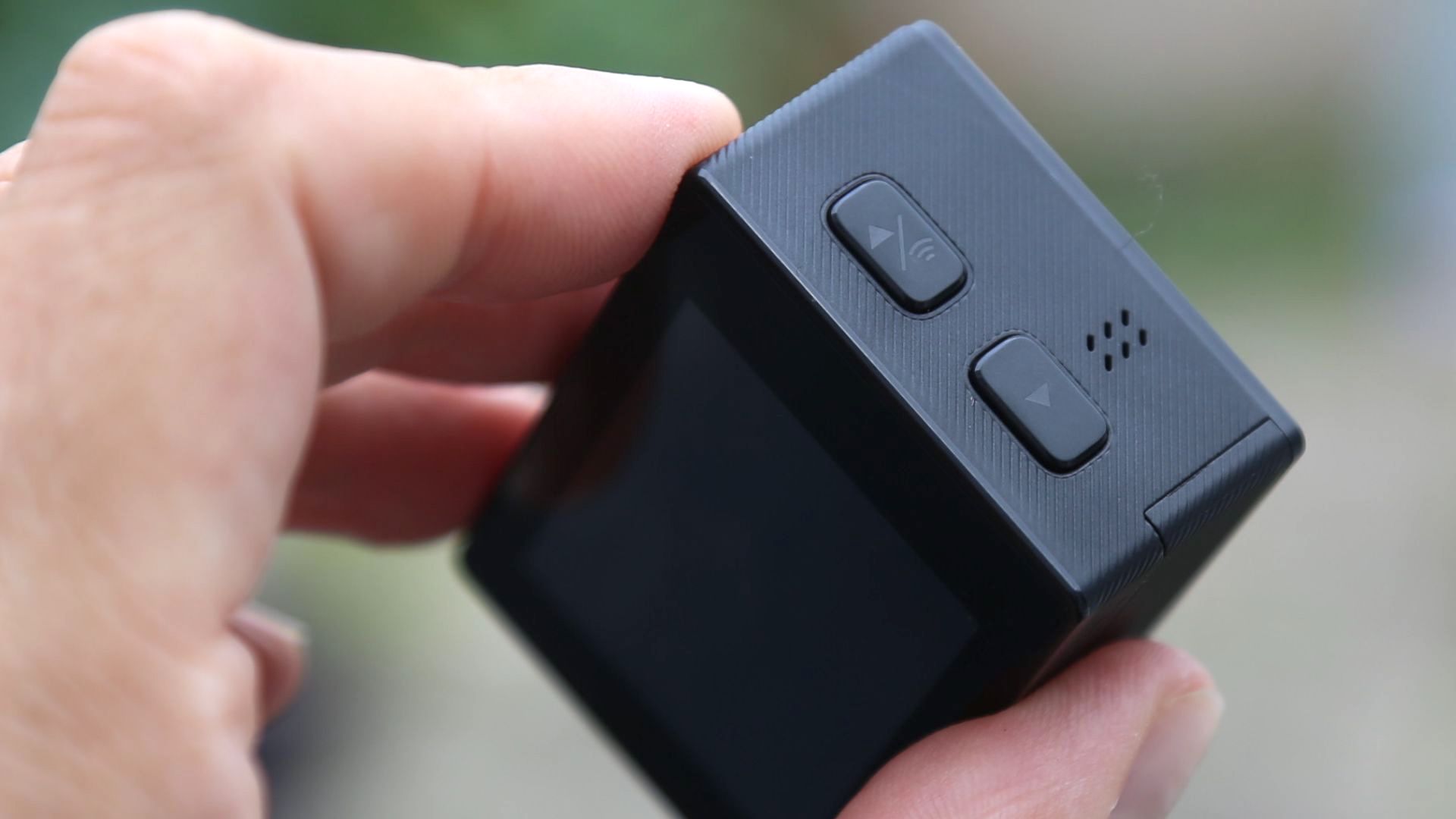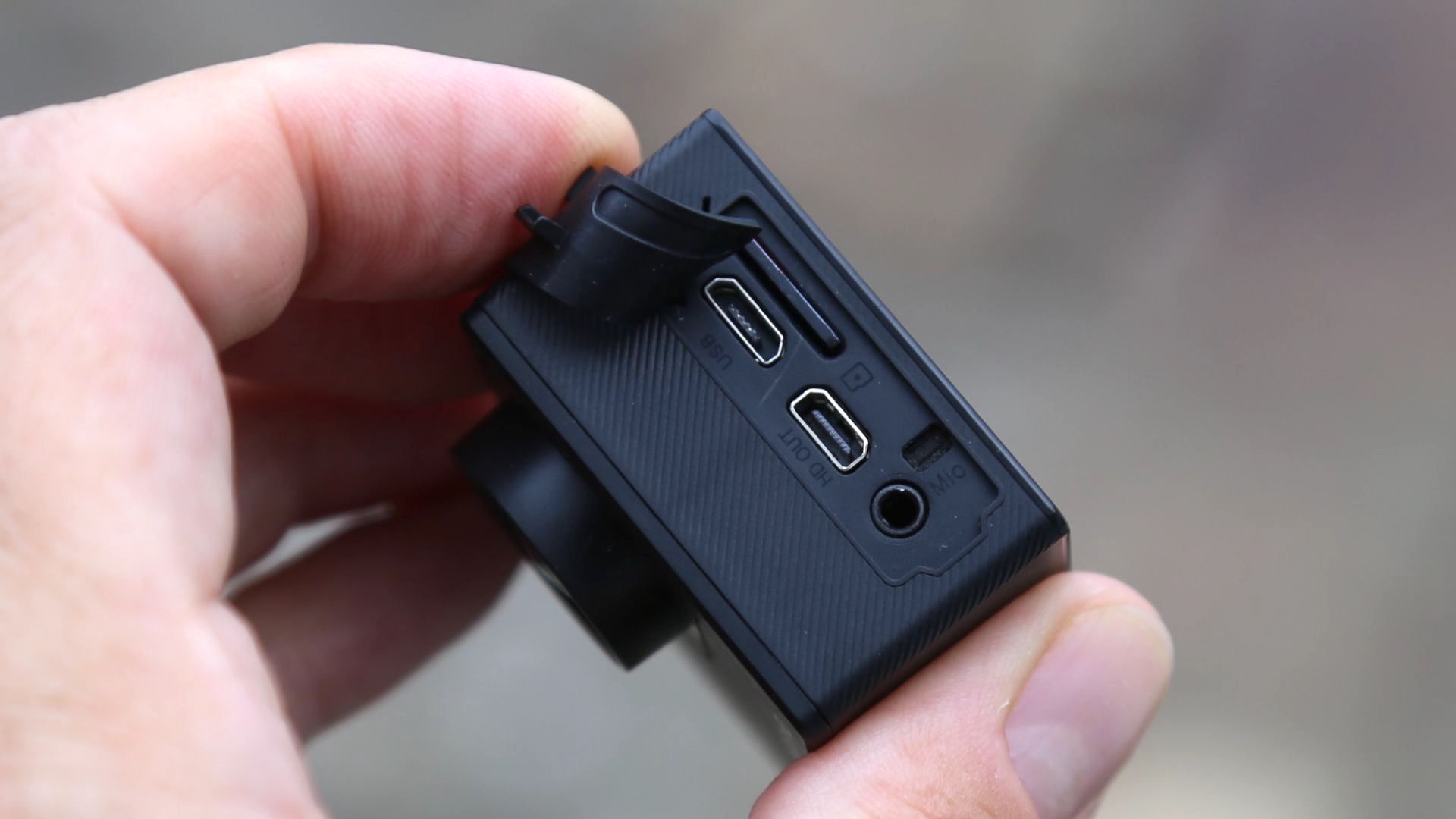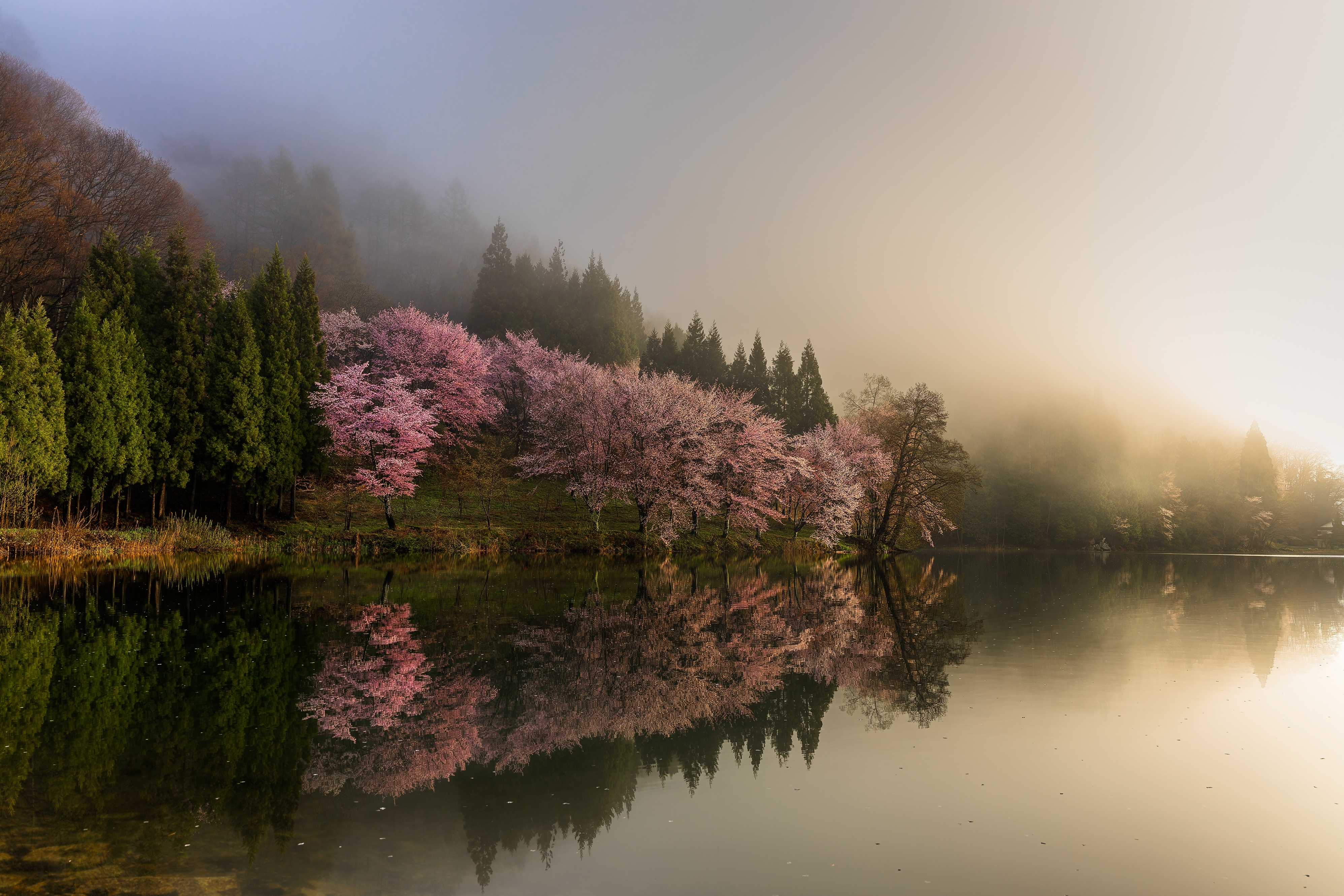Digital Camera World Verdict
A mountain of accessories lends huge versatility to this incredibly affordable action camera, but it’s let down by a lot of judder and pale colour that make it worth avoiding.
Pros
- +
Very low price
- +
Lots of accessories
- +
Waterproof case
- +
Lightweight design
- +
Dashcam and webcam features
Cons
- -
Motion judder
- -
Lacks contrast, color and detail
- -
No touchscreen
- -
Short battery life
Why you can trust Digital Camera World
Are you looking for a budget action camera to take on outdoor adventures like skiing, mountain biking and sailing? Occasionally a product comes along that looks too good to be true. The Wolfang GA100 (US$59.99 / £49.99) is one of those products, not just for its low price but for the multiple accessories in the box. Amid dozens of clips, straps and mounts there are two batteries, a lapel microphone and even a waterproof casing that allows the GA100 to go 40m underwater. However, there’s much to be aware of about the GA100 before you take the plunge.
Specification

Aperture: N/A
35mm equiv. focal length: N/A
Photo resolution: 20MP/16MP/12MP/8MP
Video resolution: 4K@30fps, 2.7K@30fps, 1080p@60fps, 1080p@30fps, 720p@120fps
Weight: 60g
Dimensions: 56x40x23mm
The best camera deals, reviews, product advice, and unmissable photography news, direct to your inbox!
Run time: 60-90 minutes
Key features

The GA100 is among the lightest action cameras we’ve ever tested. Weighing just 60g and measuring 56x40x23, it’s got a 170º fisheye lens and a 2-inch screen. It reaches 4K 30fps with a basic electronic image stabilization system and can be operated remotely either using a small wrist remote in the box or via Wolfang's Live DV app.
A small panel of ins and outs on the camera’s side includes a micro USB slot for recharging its removable 1,050mAh battery (two are included in the box), a mini HDMI output, an external microphone slot, and a micro SD card slot. A micro SD card is one of the few things not included in the package, so you’ll need to supply your own. We’re also not too keen on its reliance on micro USB, but we’re not surprised to see this now-defunct connector on a product this affordable.
What the GA100 physically lacks is a tripod thread. That’s reserved for a dedicated tripod case that wraps around the chassis. The waterproof case in the box that allows the GA100 to go 40m underwater. It blocks sound and remote controls from getting to the GA100’s microphone, but there’s an extra door with gaps in the box that can be swapped-out. Also in the box are a small lapel microphone, a remote control, helmet mount, extension mount, J-hook mount, a bicycle mount, a dust cover, a frame, various screws (long, short and 360º rotating), a backpack clip, a tether, four bandages and a bunch of adhesive pads.
As well as being able to shoot in a plethora of resolutions right up to 4K 30fps, the GA100 can shoot in slow motion in 720p and 1080p quality, shoot time-lapses (taking a photo every 1s/5s/10s/30s/60s), and has a shutter delay of two and ten seconds.
As is becoming a trend lately, this action camera can also be used not only as a webcam, but also as a dash cam thanks to its loop recording function (for 1/3/5 minutes).
Build and handling
The GA100 has a rudimentary user interface. It’s not the on-screen graphics and menus that are particularly basic, but the way they’re operated. Without a touchscreen to help a dizzying combination of the ‘OK’ button on the top, the standby button on the front and two up/down buttons on the side of the GA100 have to be employed to navigate menus and change settings. It takes a while to become proficient.
The GA100 also has a basic build quality. In some ways its lightweight nature makes it perfect in some scenarios – such as when fastening to a helmet, if you want to take those kinds of risks – but we’re not convinced it’s going to take much to get damaged. The chief worry is a small plastic cover that sits across the ins and outs panel, that appears to be tethered only at one corner and already doesn’t sit neatly. Both the tripod mount and the waterproof case add a much-needed layer of protection.
The Live DV app is very basic yet does everything you need. After connecting to the GA100’s WiFI network via a smartphone, the app presents a live preview. As well as initiating recording of the taking of stills from this app it’s possible to tweak the resolution, white balance and exposure compensation, or format the in-situ micro sD card. It can also playback and download to your phone any of the videos or photos. That’s it. However, it’s intuitive and during our review the app was both reliable and fast.
Performance
The 4K 30 frames per second video coming out of the GA100 is some of the most basic it’s possible to produce. Using the H.264 codec, the MOV files are about the half the size of those produced on higher-end action cameras, which indicates a small slow bit-rate. That’s obvious immediately upon playback. Colours and contrast are actually rather impressive. They’re not as rich as on more expensive action cameras, but they’re surprisingly good considering the low price. However, the GA100 suffers badly from judder and motion blur. Any kind of movement during 4K video produces virtually unwatchable results, with a distracting amount of judder as the camera pans across a scene. There is some basic electronic image stabilization (EIS) that makes video slightly smoother, but it can only be used in less-than-4K resolutions.
Sample video clips shot with Wolfang GA100
The GA100 also fails to impress with photos. Just 4 MB in size despite being 19.6 megapixels, still images badly lack color and contrast, with shadowed areas looking grayish and a generally washed-out look. Most of that can be improved upon in post-processing if you can be bothered, though they also feature a distinct lack of detail and some picture noise.
Sample stills shot on Wolfang GA100
Battery life is as you might expect on the GA100, with around an hour’s 4K recording possible on one battery. You can stretch it out a little if you shoot in 1080p, but either way the provision of an extra battery is a nice touch. There’s no external charger supplied with the GA100, so both batteries need to be charged while in the camera. It takes about three hours to charge an empty battery.
Verdict
The GA100 is a tempting package with an excellent app, but this is not an impressive camera. With so many mounts, clips and accessories in the box it will persuade many into investing, but the results it gets are very basic. Its 4K 30fps video is too juddery to be unwatchable, which means having to rely on its drop-down resolutions for their higher frame rates and basic image stabilization. With lacklustre stills photos too we advise you to stay away from the GA100 if you need 4K and invest in something at least double the price if you want to capture outdoor adventures in anything approaching archive quality. However, if you’re after an action camera for vlogging and simple pieces to camera – or you like the idea of an action camera that doubles as a dashcam – then the GA100 may do what you need.
Read more
Best GoPro alternatives
Best action cameras
Best budget action cameras
Best GoPro camera
Best cameras under $100
Best waterproof cameras
Best cameras for kids

Jamie has been writing about photography, astronomy, astro-tourism and astrophotography for over 15 years, producing content for Forbes, Space.com, Live Science, Techradar, T3, BBC Wildlife, Science Focus, Sky & Telescope, BBC Sky At Night, South China Morning Post, The Guardian, The Telegraph and Travel+Leisure.
As the editor for When Is The Next Eclipse, he has a wealth of experience, expertise and enthusiasm for astrophotography, from capturing the moon and meteor showers to solar and lunar eclipses.
He also brings a great deal of knowledge on action cameras, 360 cameras, AI cameras, camera backpacks, telescopes, gimbals, tripods and all manner of photography equipment.









